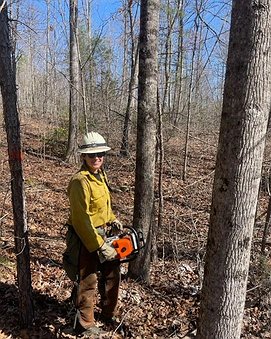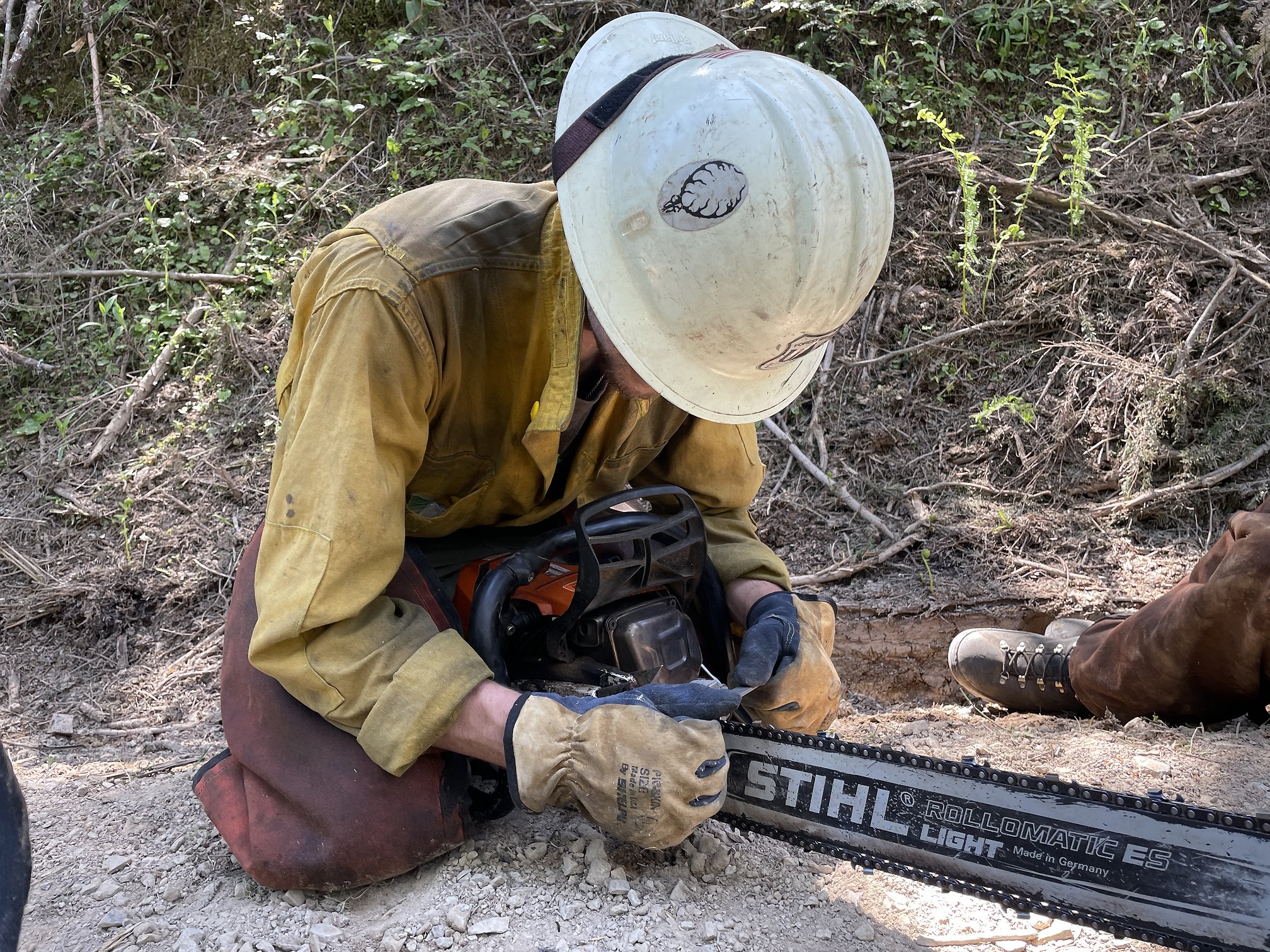On the fire line
CAROLYN BOSTICK | Hagadone News Network | UPDATED 1 year, 5 months AGO
Carolyn Bostick has worked for the Coeur d’Alene Press since June 2023. She covers Shoshone County and Coeur d'Alene. Carolyn previously worked in Utica, New York at the Observer-Dispatch for almost seven years before briefly working at The Inquirer and Mirror in Nantucket, Massachusetts. Since she moved to the Pacific Northwest from upstate New York in 2021, she's performed with the Spokane Shakespeare Society for three summers. | July 2, 2024 1:00 AM
WALLACE — As an engineer for the Forest Service and former helicopter mechanic in the Marine Corps., for Ashley McCarthy, going through wildland fire training was a return to her roots.
“Being able to take a small group of people who we train with and go in and effectively accomplish the mission, you've got this beautiful camaraderie and everyone's working hard all the time together. There are so many parallels between wildland firefighting and the military,” McCarthy said.
The firefighting academy, called “Guard School” hosted 76 first-year students and 35 advanced students at Shoshone Mountain Retreat in June. McCarthy was one of the advanced participants involved in the multi-agency training.
The U.S. Forest Service, the Idaho Department of Lands, the Bureau of Land Management, Selkirk Fire Rescue and Northern Lakes Fire District participated in the training and fire simulations. Interagency cooperation such as Guard School training strengthens interagency relationships ahead of major wildfires.
Live fire field training allowed instructors to replicate fire conditions in a simulation so new and advanced students could demonstrate their new abilities in a safe and controlled environment. For McCarthy, the leadership and tactical elements of the advanced course were a way to way to ease into different skill sets with a lot of unknown variables.
“You’re coming into these mixed groups with people you’ve never met from all over the Panhandle from different agencies, backgrounds and experiences, so it was an effective way to give a course on how to fill these leadership roles,” McCarthy said.
Public speaking is a valuable tool when dealing with rapidly changing conditions on the fire line.
"Learning fundamental leadership principles and applying them in dynamic field simulations to really challenged us to get out of our comfort zones,” McCarthy said.
During the simulation, four large bonfires were built, firefighting crews were assigned by dispatch and then dug a fire line with shovels, hoes and pulaskis to prevent further fire spread.
To add to the authenticity of the simulation, crews could call in water bucket drops from a Type 3 Bell 407 helicopter. The Panhandle Helitack crew gave a hands-on briefing about the aircraft’s capabilities and uses for fire suppression.
After air assistance tamped down the fires, wildland firefighters worked to improve the fire line, pulling apart burning materials, chunking them up, using water or working into the dirt to extinguish the flame as part of “mopping up” the fires. Participants went gridding for heat by hand, feeling for hot spots and hidden burning materials that could reignite.
Firefighting isn't one of McCarthy’s main responsibilities in the Forest Service, but it’s an aspect of the service she values performing. She serves on the militia wildland fire team around Coeur d’Alene primarily runs logistics for the Forest Service firefighters.
“It’s a very small group of very skilled professionals and every time I go out on a fire with them, I have a whole other level of respect for the work that they do,” McCarthy said.
ARTICLES BY CAROLYN BOSTICK

Post Falls plans to add park
3.6-acre site expected to be completed next year
After back and forth about benefits to both city residents and the nearby subdivision developer, Post Falls City Council has approved an agreement to move ahead with the creation of development of a new park by the Crowne Reserve subdivision.

N. Idaho churches ready for Christmas
Christmas is full of traditions from church denomination to denomination, but for Rev. Mariusz Majewski at St. Thomas the Apostle Catholic Church, it comes down to one symbol: the nativity crèche.

Commissioners add time to Bayview dock lease
Sides say there are details to iron out
Kootenai County Commissioners voted Tuesday to amend the termination of the docks lease with Lakes Highway District, adding 60 days, rather than expiring as originally planned on Jan. 1, 2026.





